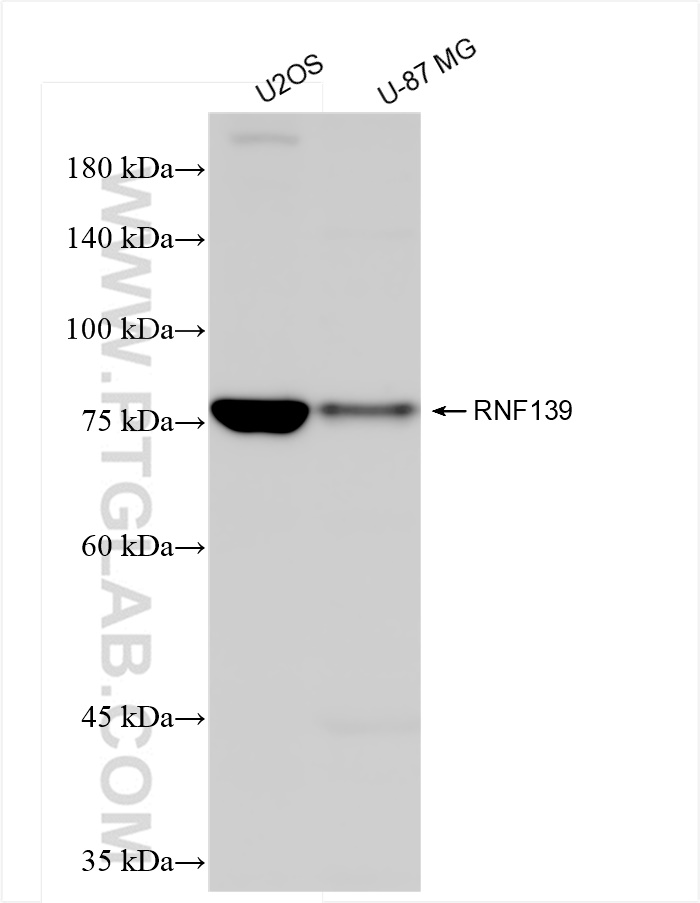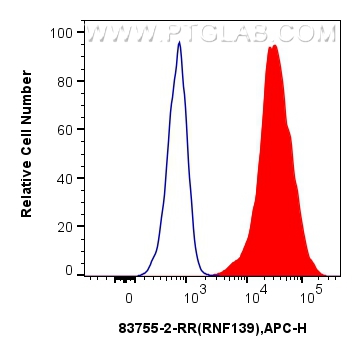验证数据展示
产品信息
83755-2-PBS targets RNF139 in WB, FC (Intra), ELISA applications and shows reactivity with human samples.
| Tested Applications | WB, FC (Intra), ELISA Application Description |
| Tested Reactivity | human |
| Immunogen | RNF139 fusion protein Ag21530 种属同源性预测 |
| Host / Isotype | Rabbit / IgG |
| Class | Recombinant |
| Type | Antibody |
| Full Name | ring finger protein 139 |
| Synonyms | RING finger protein 139, RCA1, HRCA1, EC:2.3.2.27, E3 ubiquitin-protein ligase RNF139 |
| Calculated Molecular Weight | 664 aa, 76 kDa |
| Observed Molecular Weight | 76 kDa |
| GenBank Accession Number | BC064636 |
| Gene Symbol | RNF139 |
| Gene ID (NCBI) | 11236 |
| Conjugate | Unconjugated |
| Form | Liquid |
| Purification Method | Protein A purfication |
| UNIPROT ID | Q8WU17 |
| Storage Buffer | PBS Only |
| Storage Conditions | Store at -80°C. The product is shipped with ice packs. Upon receipt, store it immediately at -80°C |
背景介绍
The RNF139 gene (ring-finger protein 139), also known as TRC8 (translocation in renal carcinoma from chromosome 8), was first identified from a family with 3;8 chromosomal translocation and hereditary renal cell carcinoma and thyroid cancer (PMID:22689053). RNF139 encodes an endoplasmic reticulum (ER) protein with 10 transmembrane segments that contain a sterol-sensing domain and a RING finger motif encoding an E3 ubiquitin ligase (PMID: 19706601). Northern blot and dot blot show that RNF139 is highly expressed in the testis, placenta, and adrenal gland and is expressed at lower levels in the heart, brain, liver, skeletal muscle, and pancreas (PMID: 9689122). It is reported that TRC8 suppresses tumorigenesis by targeting heme oxygenase-1 (HO-1), an antioxidant enzyme highly expressed in various cancers, for ubiquitination and degradation (PMID:22689053). TRC8 is also involved in cholesterol and fatty acid biosynthesis that are transcriptionally regulated by the sterol response element binding proteins (SREBPs) (PMID:17016439). Acetylation, phosphorylation, and autoubiquitination are common post-translational modifications of FNF139 protein.


